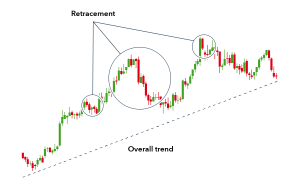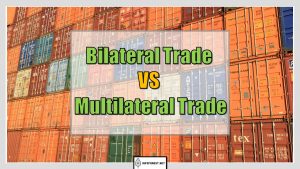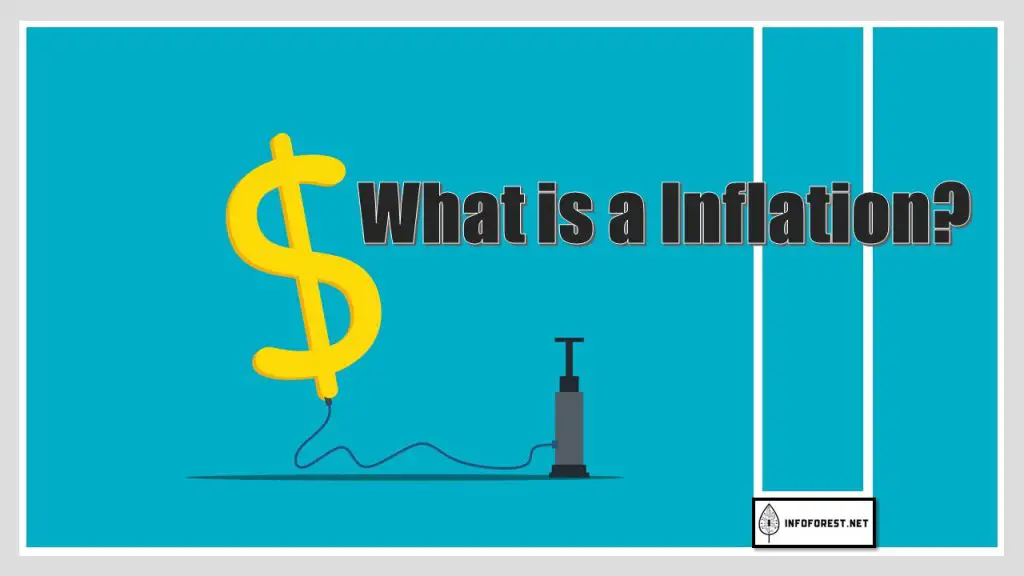
Inflation refers to the sustained increase in the general price level of goods and services in an economy over a period of time. It is a measure of the decline in the purchasing power of money. In other words, as inflation rises, each unit of currency buys fewer goods and services; consequently, inflation reflects a reduction in the standard of living. The rate of inflation is usually measured by the Consumer Price Index (CPI) or the Producer Price Index (PPI). Inflation can have a variety of causes, including changes in demand, supply-side disruptions, and shifts in monetary policy. A certain level of inflation is generally considered desirable for a growing economy, but high or rapid inflation can lead to economic instability and other problems.
What is Inflation?
Inflation is a sustained increase in the general price level of goods and services in an economy over a period of time. It is a macroeconomic phenomenon that affects the purchasing power of money and the standard of living of an economy’s citizens. In other words, as inflation rises, each unit of currency buys fewer goods and services, making it more expensive for individuals and businesses to purchase the things they need.
The rate of inflation is typically measured by the Consumer Price Index (CPI), which tracks the prices of a basket of goods and services commonly purchased by households. Other measures of inflation include the Producer Price Index (PPI), which measures the average changes in prices received by domestic producers for their output, and the Personal Consumption Expenditures Price Index (PCEPI), which measures the prices of goods and services purchased by individuals.
There are many factors that can contribute to inflation, including changes in demand, supply-side disruptions, and shifts in monetary policy. For example, if the demand for goods and services increases faster than the supply, prices will rise. Conversely, if the supply of goods and services increases faster than demand, prices will fall. Inflation can also result from changes in monetary policy, such as printing more money or lowering interest rates, which can lead to an increase in spending and prices.
A certain level of inflation is considered normal in a healthy economy, as it signals growth and increased demand. However, high or rapid inflation can lead to economic instability and can harm the purchasing power of consumers and businesses. Central banks, such as the Federal Reserve in the United States, aim to maintain a moderate level of inflation, typically around 2% per year, as part of their monetary policy.
Causes of Inflation
Inflation can be caused by a variety of factors, including changes in demand, supply-side disruptions, and shifts in monetary policy. Some of the most common causes of inflation include:
- Demand-pull inflation: This occurs when demand for goods and services exceeds the available supply, causing prices to rise. This can happen, for example, during an economic boom when consumer spending increases.
- Cost-push inflation: This occurs when the cost of production increases, leading to higher prices for goods and services. This can happen, for example, when there is a shortage of raw materials, a rise in energy costs, or an increase in labor costs.
- Monetary inflation: This occurs when there is an increase in the money supply, causing the value of money to decrease and prices to rise. This can happen, for example, when a central bank prints more money or lowers interest rates, encouraging more borrowing and spending.
- Structural inflation: This occurs when there are structural changes in an economy that lead to persistent inflation, such as changes in demographics, technology, or government policies.
- Expectations-driven inflation: This occurs when people expect prices to rise in the future, causing them to adjust their behavior, such as by spending more or saving less, and driving prices up.
It’s important to note that inflation can also have secondary effects, such as reducing the purchasing power of consumers, decreasing the value of fixed-income assets, and creating uncertainty for businesses and investors. Therefore, central banks and governments aim to maintain a moderate level of inflation as part of their monetary and fiscal policies.
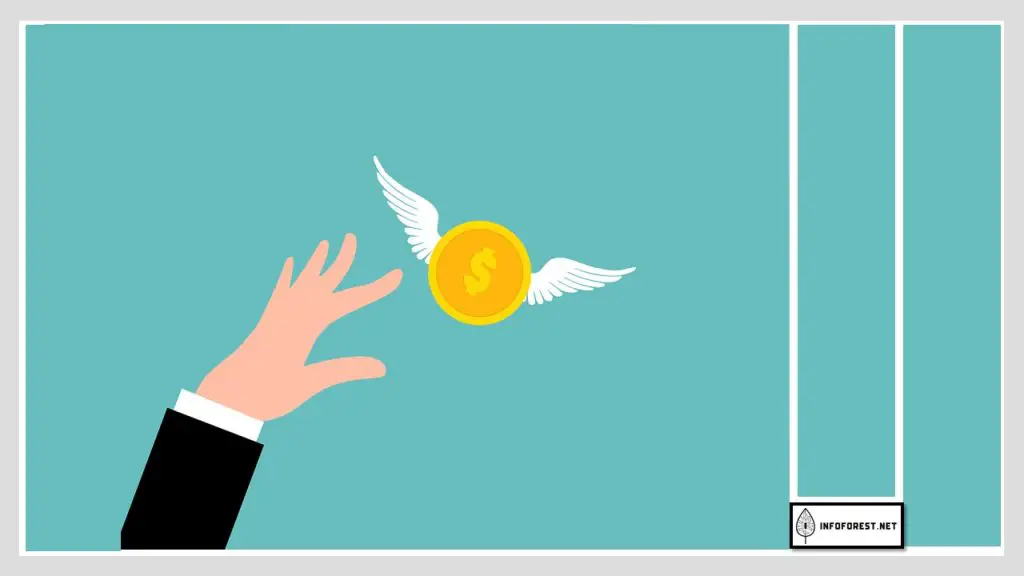
Demand-Pull Effect
The demand-pull effect is a type of inflation that occurs when demand for goods and services exceeds the available supply, causing prices to rise. This can happen, for example, during an economic boom when consumer spending increases and businesses are unable to produce enough goods and services to meet the growing demand.
The demand-pull effect is driven by the basic economic principle of supply and demand: when demand for a good or service is high and the supply is limited, prices will rise. This increase in prices can be seen as a signal to businesses to produce more of the good or service, which can help to restore balance to the market over time.
However, if the demand-pull effect persists and becomes widespread, it can lead to higher inflation and reduce the purchasing power of consumers and businesses. To help mitigate the demand-pull effect, central banks may increase interest rates, making it more expensive to borrow money and reducing spending, or implement other monetary policy tools to help control inflation.
It’s important to note that the demand-pull effect can also have secondary effects on the economy, such as reducing the value of fixed-income assets, creating uncertainty for businesses and investors, and reducing the purchasing power of consumers. Therefore, it’s important to monitor and manage inflation levels to maintain economic stability and support long-term growth.
Cost-Push Effect
The cost-push effect is a type of inflation that occurs when the cost of production increases, leading to higher prices for goods and services. This can happen, for example, when there is a shortage of raw materials, a rise in energy costs, or an increase in labor costs.
The cost-push effect is driven by the basic economic principle of supply and demand: when the cost of production increases, businesses will have to raise the prices of their goods and services in order to maintain profitability. This increase in prices can reduce demand for the good or service, as consumers are now able to afford less of it.
If the cost-push effect persists and becomes widespread, it can lead to higher inflation and reduce the purchasing power of consumers and businesses. To help mitigate the cost-push effect, central banks may increase interest rates, making it more expensive to borrow money and reducing spending, or implement other monetary policy tools to help control inflation.
It’s important to note that the cost-push effect can also have secondary effects on the economy, such as reducing the value of fixed-income assets, creating uncertainty for businesses and investors, and reducing the purchasing power of consumers. Therefore, it’s important to monitor and manage inflation levels to maintain economic stability and support long-term growth.
Built-in Inflation
Built-in inflation refers to the persistent, long-term increase in the general level of prices of goods and services in an economy, regardless of changes in demand, supply, or monetary policy. This type of inflation is often the result of structural changes in an economy, such as changes in demographics, technology, or government policies.
For example, built-in inflation can occur when there is an increase in the cost of production, such as an increase in the price of raw materials or labor, that cannot be easily passed on to consumers. This can lead to a persistent increase in the general level of prices, even if there is no corresponding increase in demand.
Built-in inflation can also occur when there are changes in the supply of goods and services, such as a reduction in the supply of oil or other natural resources, that lead to a persistent increase in the general level of prices.
Built-in inflation can be a challenge for central banks and governments to manage, as it is not easily influenced by traditional monetary policy tools, such as changes in interest rates or the money supply. Therefore, to address built-in inflation, it may be necessary to implement structural reforms, such as improving the efficiency of production, reducing the cost of production, or improving the supply of goods and services.
The Formula for Measuring Inflation
The most common formula for measuring inflation is the Consumer Price Index (CPI). The CPI is a measure of the average change over time in the prices paid by consumers for a basket of goods and services, such as food, housing, transportation, and healthcare.
The formula for calculating the CPI is as follows:
CPI = (Price of basket of goods and services in current period / Price of basket of goods and services in base period) * 100
The base period is typically set to 100, and the change in the CPI is calculated relative to this base. The current period’s prices are compared to the prices of the same basket of goods and services in the base period, and the resulting ratio is multiplied by 100 to express the change in prices as a percentage.
For example, if the price of a basket of goods and services was $100 in the base period and is now $110, the CPI would be calculated as follows:
CPI = ($110 / $100) * 100 = 110
This would indicate that there has been a 10% increase in the average price of goods and services over the time period.
The CPI is used by governments, central banks, and economists to monitor inflation and make decisions on monetary policy, such as changes in interest rates. It’s important to note that the CPI is just one of several measures of inflation, and there are other indices, such as the Producer Price Index (PPI), that measure changes in the prices of goods and services at different stages of production.
Advantages and Disadvantages of Inflation
Advantages of Inflation:
- Encourages spending: Inflation can encourage consumers and businesses to spend money rather than saving it, as they anticipate that prices will increase in the future, reducing the purchasing power of their savings.
- Supports economic growth: Low levels of inflation can support economic growth by making it easier for businesses to increase prices and pay their employees more, and by providing consumers with an incentive to spend.
- Reduces debt burden: Inflation reduces the real value of debt over time, making it easier for individuals and businesses to pay off their debts.
- Helps in redistributing wealth: Inflation can help redistribute wealth from savers to borrowers, as it reduces the real value of savings and increases the real value of debt.
Disadvantages of Inflation:
- Decreases purchasing power: Inflation reduces the purchasing power of money, as consumers have to pay more for goods and services that they could previously afford.
- Uncertainty: Inflation can create uncertainty for businesses and consumers, as they may have a harder time predicting future prices and making long-term plans.
- Reduced saving incentives: Inflation can reduce the incentive for people to save, as they know that the real value of their savings will decrease over time.
- Hurts fixed-income earners: Inflation can have a particularly adverse effect on those who rely on fixed-income sources, such as retirees and people with savings accounts, as the real value of their income decreases over time.
- Can lead to hyperinflation: If left uncontrolled, inflation can spiral out of control and lead to hyperinflation, where prices increase rapidly and the economy becomes unstable.
In conclusion, while low levels of inflation can have benefits for an economy, it’s important to monitor and manage inflation levels to avoid the negative consequences of high or persistent inflation.
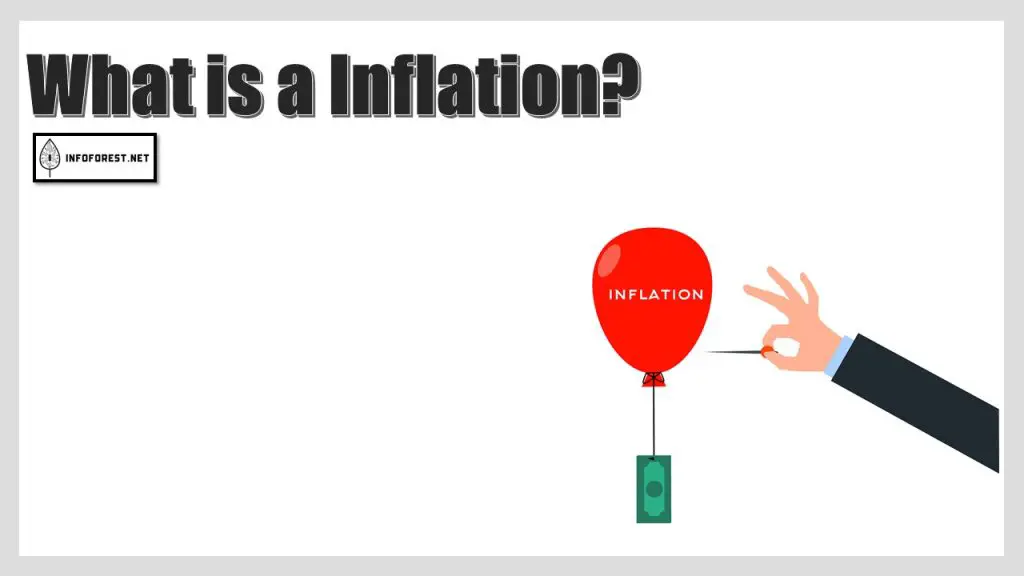
Controlling Inflation
There are several methods used to control inflation:
- Monetary policy: Central banks use monetary policy to control inflation by adjusting the money supply and interest rates. If inflation is too high, central banks can reduce the money supply and increase interest rates, making it more expensive to borrow money and slowing down economic growth.
- Fiscal policy: Governments can also use fiscal policy, such as changes in taxes and government spending, to control inflation. For example, reducing government spending or increasing taxes can reduce demand and slow down inflation.
- Exchange rate policy: Countries can use exchange rate policy to control inflation by adjusting the value of their currency relative to other currencies. If a country’s currency is overvalued, it can reduce the price of imports and help control inflation.
- Price controls: Governments can also use price controls, such as price freezes or rationing, to control inflation. However, these methods are often criticized for being inefficient and causing shortages of goods and services.
- Structural reforms: Structural reforms, such as improving the efficiency of production, reducing the cost of production, or improving the supply of goods and services, can also help control inflation in the long run.
It’s important to note that controlling inflation is a delicate balancing act, as reducing inflation too quickly can lead to a recession while letting inflation persist can lead to higher prices and reduced purchasing power. Central banks and governments need to carefully monitor inflation and use a combination of the above methods to achieve the goal of stable and moderate inflation.
We also invite you not to miss our other popular articles such as:
Difference Between Rose Gold and Yellow Gold– ChatGPT–Difference between left and right Twix–Difference Between Eastern Time Zone and Central Time Zone–Difference Between Capitalism and Communism– Difference Between EST and EDT–How many weeks in a Year– Difference Between Evening and Afternoon – Democrat vs Republican
Extreme Examples of Inflation
There are several extreme examples of inflation throughout history:
- The Weimar Republic, Germany (1920-1923): After World War I, Germany suffered from hyperinflation, with prices rising by over 20% per day at its peak. This was caused by a combination of factors, including large government debt, the printing of money to pay for government spending, and a lack of confidence in the currency.
- Zimbabwe (2000-2009): Zimbabwe experienced one of the highest rates of hyperinflation in history, with prices rising by billions of percent and the currency becoming effectively worthless. This was due to a combination of factors, including economic mismanagement, political instability, and sanctions.
- Hungary (1945-1946): After World War II, Hungary experienced hyperinflation, with prices rising by over 35% per day. This was due to a combination of factors, including large government debt, a shortage of goods, and a lack of confidence in the currency.
- Yugoslavia (1993-1994): In the early 1990s, Yugoslavia experienced hyperinflation, with prices rising by over 50% per month. This was due to a combination of factors, including economic mismanagement, political instability, and a lack of confidence in the currency.
These extreme examples of inflation demonstrate the potential consequences of uncontrolled inflation and the importance of managing inflation levels to ensure economic stability.
What Causes Inflation?
Inflation is caused by a combination of factors, including:
- Demand-pull inflation: This occurs when demand for goods and services outpaces the supply, leading to higher prices. For example, if the economy is growing rapidly and there is high demand for goods and services, prices can rise as businesses try to keep up with demand.
- Cost-push inflation: This occurs when the cost of production increases, leading to higher prices. For example, if there is a sharp increase in the price of raw materials or wages, businesses may need to raise their prices to cover their higher costs.
- Monetary factors: Inflation can also be caused by an increase in the money supply or a decrease in the value of money. If a central bank prints more money or if there is an increase in the amount of credit available, this can lead to an increase in demand and higher prices.
- Structural factors: Structural factors, such as bottlenecks in the supply of goods and services or inefficiencies in the production process, can also contribute to inflation.
Inflation can also be influenced by global factors, such as changes in exchange rates, commodity prices, and geopolitical events. The impact of these factors on inflation can vary, but they can play a significant role in shaping inflation expectations and determining the overall level of inflation.
Is Inflation Good or Bad?
Inflation can be both good and bad, depending on the level and the context.
Low and stable inflation is generally considered to be good for an economy, as it helps to reduce uncertainty and encourages investment and spending. Low inflation also helps to maintain the purchasing power of consumers and savers.
On the other hand, high and uncontrolled inflation can be harmful to an economy, as it can reduce the purchasing power of consumers and savers, increase the cost of borrowing, and reduce economic growth. High inflation can also lead to increased uncertainty and reduced investment, as businesses and consumers may not be able to accurately predict the future cost of goods and services.
Therefore, it’s important for central banks and governments to maintain a balance and aim for moderate and stable inflation, which can help to promote economic growth and stability.
Effects of Inflation
Inflation can have a range of effects on an economy, including:
- Reducing the purchasing power of money: Inflation erodes the purchasing power of money over time, which means that consumers and savers need more money to buy the same goods and services. This can reduce the standard of living for people on fixed incomes, such as retirees or those relying on savings.
- Increasing the cost of borrowing: Inflation can increase the cost of borrowing, as lenders may demand higher interest rates to compensate for the eroding purchasing power of money. This can make it more expensive for individuals and businesses to borrow money and invest in the economy.
- Encouraging investment in assets: In some cases, inflation can encourage investment in assets such as property or stocks, as these assets may increase in value faster than inflation. This can lead to an increase in wealth for some individuals, but can also contribute to financial instability if the market becomes overheated.
- Reducing economic growth: High and uncontrolled inflation can reduce economic growth, as it can lead to increased uncertainty, reduced investment, and reduced consumer spending.
- Encouraging exports and reducing imports: In some cases, inflation can encourage exports, as the lower value of money makes exports cheaper for foreign buyers. At the same time, inflation can increase the cost of imports, making them more expensive for domestic consumers.
In conclusion, the effects of inflation are complex and can vary depending on the level and context of inflation, as well as other economic and financial factors. It’s important for central banks and governments to monitor inflation and aim for moderate and stable inflation to promote economic growth and stability.
Most Viewed Articles
Conclusion
In conclusion, inflation is a sustained increase in the general price level of goods and services in an economy over a period of time. It’s a complex and multi-faceted phenomenon that can be influenced by a range of factors, including demand and supply conditions, monetary policy, and structural factors.
Low and stable inflation is generally considered to be beneficial for an economy, as it helps to reduce uncertainty and encourage investment and spending. However, high and uncontrolled inflation can have a range of negative effects, including reducing the purchasing power of money, increasing the cost of borrowing, and reducing economic growth.
Therefore, it’s important for central banks and governments to monitor inflation and aim for moderate and stable inflation to promote economic growth and stability. This can be achieved through the use of monetary and fiscal policy tools, such as interest rate adjustments, government spending, and regulation of the money supply.
We also invite you not to miss our other popular articles such as:
What Is Bitcoin– What Is PayPal and How Does it Work – Kilometer vs Mile – How to get rid of hiccups What does TBH mean – What does NSFW mean – What does IG mean–What does CAP mean– What is normal blood pressure –What is the rarest blood type–Difference Between Hotel And Motel – Differences Between Chinese and Japanese and Difference Between Zip Code and Postal Code




